Nvidia GeForce RTX 2080 Founders Edition Review: Faster, More Expensive Than GeForce GTX 1080 Ti
Why you can trust Tom's Hardware
Conclusion
Nvidia made it easy for us to fall in love with GeForce RTX 2080 Ti, the Turing-based flagship. The company started with a sophisticated TU102 processor architected to run faster, yet more efficiently than the generation prior. It flanked that chip with 11GB of GDDR6, giving us a first taste of memory bandwidth numbers above 600 GB/s on the desktop. A big vapor chamber was dropped on top, dissipating the board’s 260W as quietly as possible.
Then, Nvidia put rubber to the road with unprecedented performance in today’s games. GeForce RTX 2080 Ti is fast enough for smooth frame rates at 4K using the highest quality presets available. Only one other graphics card comes close to rivaling it: the mighty Titan V. Of course, $1200 is a lot of money. But $1200 to do something that wasn’t possible before makes the pill a little easier to swallow.
Now, the problem with GeForce RTX 2080, Nvidia’s second-fastest Turing card, is that it’s only marginally faster than GeForce GTX 1080 Ti. Moreover, Nvidia’s Pascal-based flagship is currently available for about $100 less than the RTX 2080 Founders Edition. Neither card allows you enjoy 4K gaming unconditionally. If you want to crank up the detail settings, they both necessitate dropping to 2560x1440 occasionally. In fact, it’s easier to think of them as ideal companions for high-refresh QHD monitors.
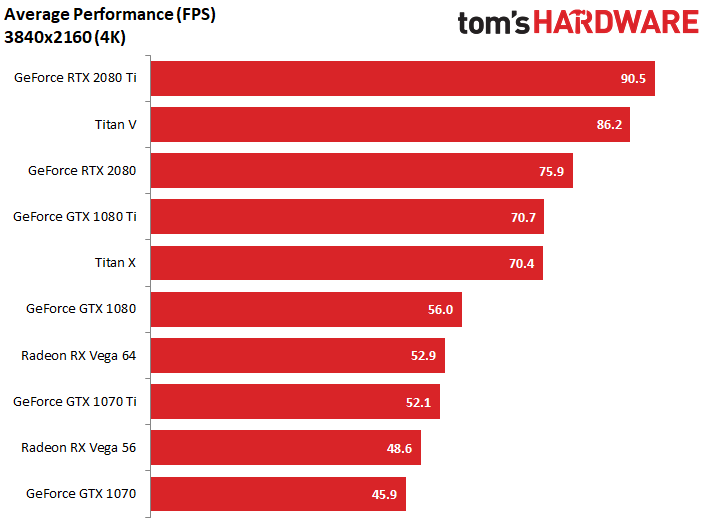
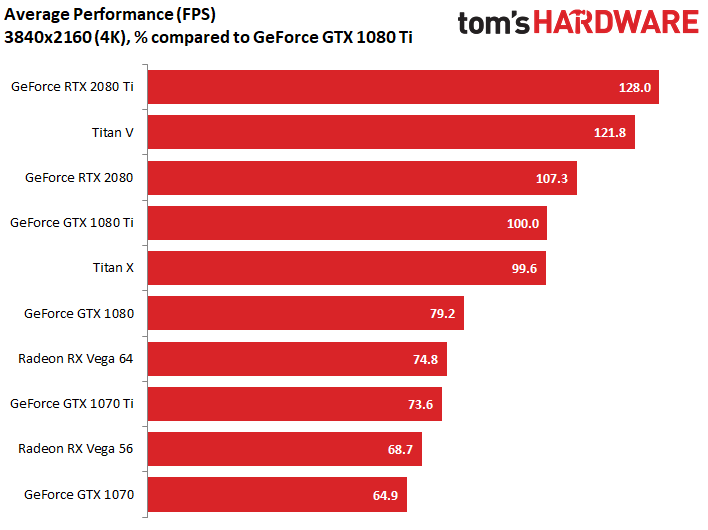
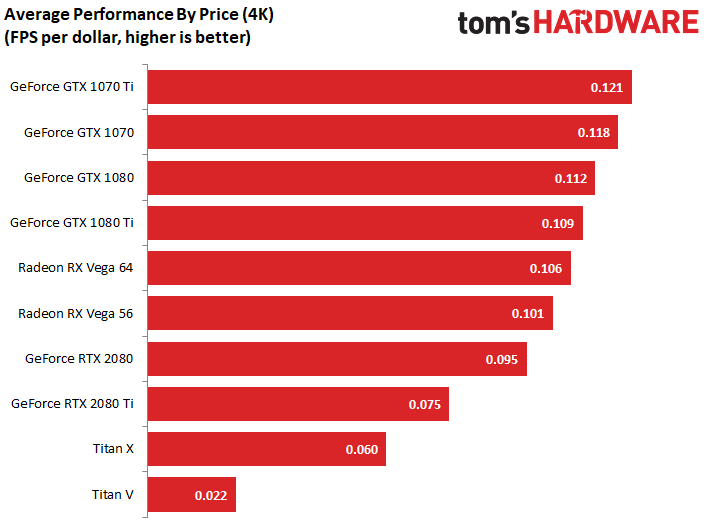
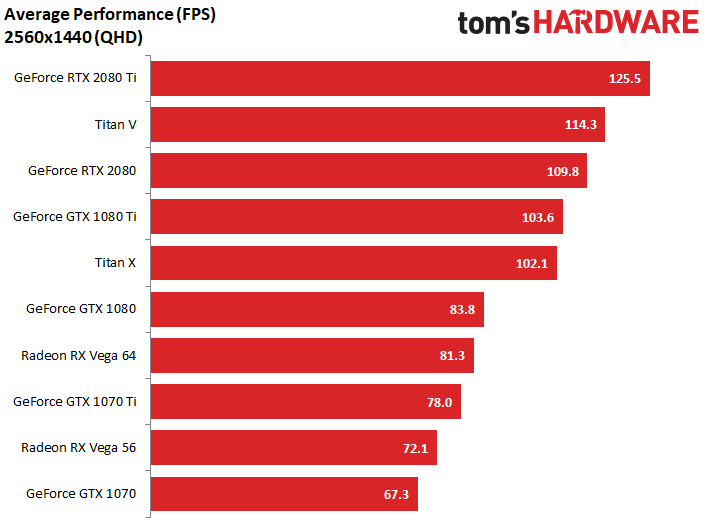
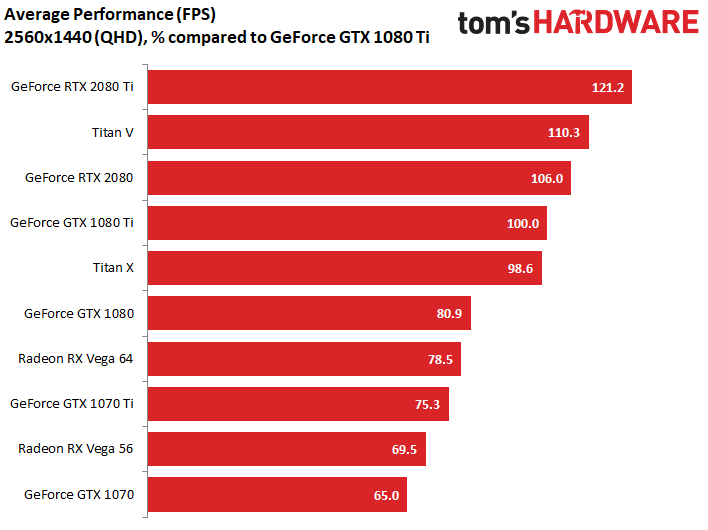
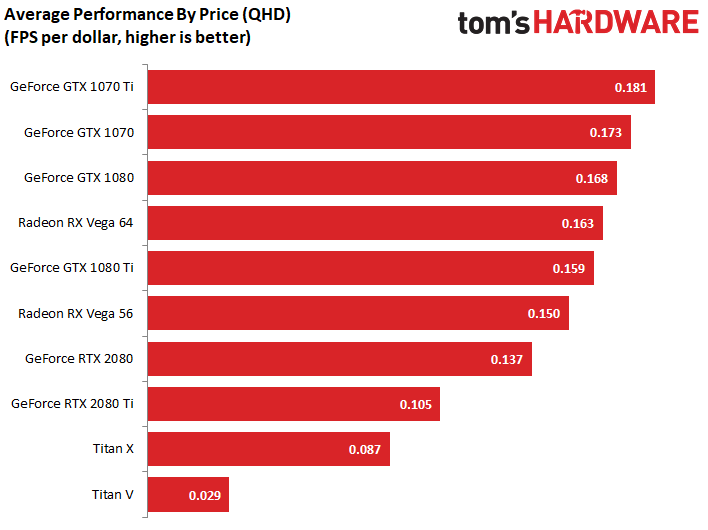
Nvidia does try for a more favorable comparison by pitting the 2080 against GeForce GTX 1080. But there’s no way to reconcile a greater-than $300 difference between the cheapest 1080s and GeForce RTX 2080 Founders Edition’s asking price. It’d be like comparing GeForce GTX 1080 Ti to GTX 980 a year ago; they’re simply in different classes.
Notice that we’re not talking about ray tracing as a reason to buy GeForce RTX 2080 instead of GTX 1080 Ti. Without question, the technology packed into Turing has us captivated. And if the first game to launch with real-time hybrid rendering support bowls us over, we’ll change our tune. However, we’re not going to recommend paying a premium today for hardware that can’t be fully utilized yet based solely on what it should be able to do in the future. This is doubly true since we don't yet know how RTX 2080 fares with two-thirds of RTX 2080 Ti's RT core count.
There will come a time when the availability of Pascal-based GeForce cards tapers off, removing the choice between GeForce GTX 1080 Ti and RTX 2080. By then we hope to see 2080s that start in the $700 range, replacing GTX 1080 Ti with a more capable successor. For now, though, GeForce RTX 2080 feels like a side-grade to GTX 1080 Ti. It's faster and more expensive, with a lot more potential, but not something we'd rush to jump into right now.
MORE: Best Graphics Cards
Get Tom's Hardware's best news and in-depth reviews, straight to your inbox.
MORE: Desktop GPU Performance Hierarchy Table
MORE: All Graphics Content
-
velocityg4 What? No “just buy it” in your conclusion.Reply
Considering Founders edition usually starts about $100 more that standard edition. Plus, it is new to market. If a 2080 can be had for $100 more than a 1080 Ti. The price is as expected. -
Krazie_Ivan 2080 should have been the 2070, as it barely beats a 1080ti and is the TU104 die. and given the 30mo since Pascal launch, we should almost be looking at 3000 series benches. combine those two with the insane pricing, and Turing/RTX is a huge disappointment. DLSS could be nice and i'm glad Nvidia is pushing for RT development, but there's not enough positives here to justify the costs. $380 2080 / $500 2080ti (and relabel them to match their die codes, like Keplar-Pascal)... otherwise, no thx.Reply -
chaosmassive thank you for your thorough review on these cards,Reply
finally the card has been demystified and indeed for the price is it not worth the buy considering 1080 ti in such a low price..
turned out I dont need ray tracing in my life before I die. -
shrapnel_indie ReplyAfter seeing the GeForce RTX 2080 Ti serve up respectable performance in Battlefield V at 1920x1080 with ray tracing enabled,
Unfortunately, we’ll have to wait for another day to measure RTX 2080’s alacrity in ray-traced games. There simply aren’t any available yet.
Odd... either ray tracing graphics games are available or they're not. You can't test what isn't available for testing... and RT for BF5, last I heard was a zero-day patch... (or was it the modifications to RT that was supposed to improve FPS to acceptable levels.) -
cangelini Reply21333311 said:After seeing the GeForce RTX 2080 Ti serve up respectable performance in Battlefield V at 1920x1080 with ray tracing enabled,
Unfortunately, we’ll have to wait for another day to measure RTX 2080’s alacrity in ray-traced games. There simply aren’t any available yet.
Odd... either ray tracing graphics games are available or they're not. You can't test what isn't available for testing... and RT for BF5, last I heard was a zero-day patch... (or was it the modifications to RT that was supposed to improve FPS to acceptable levels.)
They're not available, but we've seen Battlefield 5 in action with ray tracing enabled ;) -
WINTERLORD wait a minute the 2080 has only one RT core and the 2080 has 72 RT cores? I think there may be an error in the review. update spoke to soon i think that means 1rt cluster...Reply
first page says " TU104 is constructed with the same building blocks as TU102; it just features fewer of them. Streaming Multiprocessors still sport 64 CUDA cores, eight Tensor cores, one RT core, four texture units, 16 load/store units, 256KB of register space, and 96KB of L1 cache/shared memory. " -
jimmysmitty Reply21333069 said:failure, this is a failure.
this gtx20 series looks like it won't be worth it.
I think sales will determine that and if history is anything without stiff competition from AMD I am sure they will sell just fine especially once the AiB cards come out.
21333082 said:What? No “just buy it” in your conclusion.
Considering Founders edition usually starts about $100 more that standard edition. Plus, it is new to market. If a 2080 can be had for $100 more than a 1080 Ti. The price is as expected.
Chris has never been like that.
That said, the pricing should be decent for AiB after a few months. When they launch they get price gouged. Still I would have loved a GTX 1080 price number. That GPU outperformed the 980 Ti by a good margin and was cheaper at launch.
Maybe AMD will come out with something sometime soon. Otherwise we wont see pricing drop. That or AMD will take advantage of the pricing increase and up theirs too.


